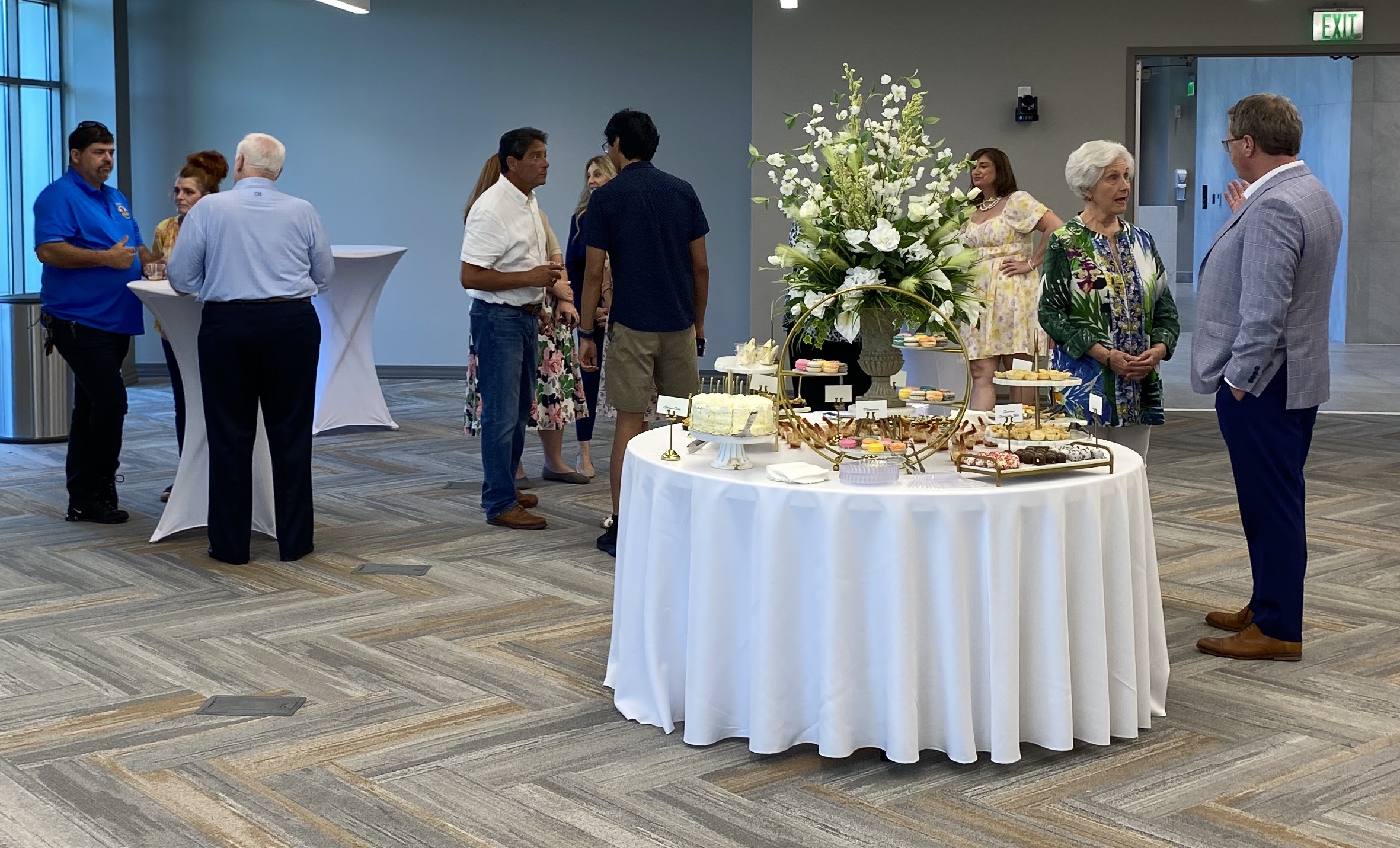EDDIE SEAGLE: October is a great month
Published 12:12 pm Saturday, October 27, 2018

- Eddie Seagle is a Sustainability Associate, Golf Environment Organization (Scotland), Agronomist and Horticulturalist, CSI: Seagle (Consulting Services International), Professor Emeritus and Honorary Alumnus (Abraham Baldwin Agricultural College), Distinguished Professor for Teaching and Learning (University System of Georgia) and Short Term Missionary (Heritage Church, Moultrie). Direct inquiries to csi_seagle@yahoo.com.
“October made the leaves on Main Street fit for a crown. They dripped from the trees in jewel-toned shades: yellow and orange and fiery red. The cool wind sent a confetti-cluster of leaves down around us.” Natalie Lloyd.
“October is the fallen leaf, but it is also a wider horizon more clearly seen. It is the distant hills once more in sight, and the enduring constellations above them once again.” Hal Borland.
Prayers uplifted for all those who suffered loss from Hurricane Michael as they rebuild their lives and homes. Also, prayers uplifted for all the volunteers who are assisting cleanup and restoration in these storm-damaged areas. With God everything is possible, but without God nothing is possible.
As the temps fluctuate from the high 40’s at night to the low 70’s during the day, we are appreciated these cooler conditions. With the fall season in our midst, we will also experience the changing in color and dropping of the leaves from the deciduous trees and shrubs which creates interest in appearance but makes cleanup a reality.
As various outdoor activities are initiated, October is a great month for working in the yard and landscape. The weather outside is comfortable, yet cool enough to encourage plants to transition well into their new landscape homes. Check the soil for necessary preparation and proper drainage and make the necessary adjustments before installing any new plant materials. Your current landscape checklist should address the following items.
Azaleas: Azaleas can bloom from late winter into early summer, depending on type. To extend the season, plant early-, mid-, and late-season bloomers in the landscape. During the selection process, give consideration to flower color, projected mature size of adult plants, and their season of bloom. For example, southern Indian hybrids and Glenn Dale hybrids are medium to tall shrubs, sometimes growing 8-12 feet tall. Gumpo azaleas seldom exceed three feet in height, but may have a spread of five feet or more. Southern Indian hybrids and Glenn Dale hybrids bloom in early to mid-spring, while Gumpos make their show in May and June. Always make those choices giving successive bloom dates, thus extending the blooming season.
Also, the “Red Ruffles” Rutherford hybrid is early-blooming and grows to 2-4 feet tall and needs mid-day shade. The “George Lindley Taber” southern Indica hybrid offers midseason blooms and reaches 4-6 feet in height. The “Sherwood Red” and “Coral Bells” Kurume hybrids bloom early to mid-season bloom and get 2-4 feet tall. The Spider Azalea is very rare and blooms early to mid-season and grows 4-6 feet tall. The “Gumpo Pink” Satsuki hybrid blooms late season with 1-2 feet in height. The “Pride of Mobile” southern Indica hybrid is a mid-season bloomer and reaches 4-6 feet in height. In addition, always consider using the native azaleas which are a good fit for this area.
Dahlias: After frost has killed the tops of dahlias, cut back the stalks to about three inches above the ground level. A week later, dig the tubers and dry them in the sun for a few days. After drying, use a fungicide, and store in mesh bags in a cool, dry environment for their winter home. Before planting next spring, divide each clump to tubers containing a growth bud and discard the central portion of the plant.
Hardscapes: The weather still promotes the development of your ideas for sidewalks, courtyards, patios, gazebos, etc. for multi-seasonal use and enjoyment. Such areas can become an integral part of the landscape throughout each season.
Houseplants: Plants brought outside for the summer need extra care while they acclimate and re-adjust to the indoors where light and air flow will be very critical. Acclimate them from their outdoor home to their new indoor home by parking them in transition setting (carport or garage) for a couple of weeks. Once inside, check their placement to insure their safety from the potential harmful air flow of heating ducts and exterior doorways. Also, be sure they are receiving sufficient lighting. Dust off large-leaved plants, such as saddle leaf philodendron, to prevent the build-up of dust and grime on the leaf surface which will interfere with effective photosynthesis and ultimately, plant health.
Mulch: Replenish mulch in flower beds and around shrubs and trees. Add enough pine straw, pine bark, or other organic material to make a layer 3 to 4 inches thick. Consider removing the old mulch to improve air flow and exchange between soil and atmosphere and to minimize disease and insect habitats. However, keeping the old mulch in place does offer enrichment to the soil condition.
Nursery stock: New shipments of ornamentals should continue to arrive at local nurseries since the fall planting season has begun. Current inventories offer a larger number of choices. Take the time to peruse local inventories and note the choices available. Read all about your choices on the plant label and also look them up on the internet. Learn as much as you can about the plants you choose before you purchase them. With several months to become established, when planted and maintained properly, the plants should be very healthy in the spring.
Outdoor containers: Keep empty pots, urns and other clay or ceramic containers turned upside down so that water will not collect in them and freeze, causing breakage. If containers are too large to be moved, you can still keep them from collecting water and add some landscape interest in the process. Just insert nursery stock, pot and all, in the containers for the season. Fill in around the potted plant with wood chips or other mulching material to insulate the roots against freezing.
Transplanting: Begin moving shrubs that were root pruned earlier in late summer in preparation for transplanting. Have new planting holes prepared before actually digging the subject plant to insure ease of process effectiveness and minimal damage to the plant. Avoid transplanting on windy days so that roots will not be exposed to excessive drying winds. After transplanting, selectively prune about one-third of the plant to compensate for root damage. Water thoroughly, and apply a mulch of pine straw, wood chips, or shredded bark. Water regularly during dry periods to encourage rapid re-establishment of the plants.
Think in terms of native and sustainable plants in the landscape. May this bit of awareness spark your desire to learn and ask questions, encourage you to further apply your gained knowledge, and bring you to further realize that environmental stewardship and sustainability should be at the foundation of all your home landscape activities.
Keep your hanging baskets and potted plants refreshed with water and food. Remember to feed and water the songbirds, and to provide your pets the care they need (protect them from this extreme summer heat and humidity). Also, be on lookout for children playing and bicyclists riding along the streets and roadways throughout our communities. And remember to safely share the road with motorcycles. Drive alert and arrive alive. Don’t drive distracted or impaired, and don’t text while driving. Buckle up (click-it or ticket). Let’s keep everyone safe and secure! Help those in need and the homeless every chance you get. And, as you receive good deeds, always pay them forward. Pay for a stranger’s meal the next time you are eating out! Fall back (set your clocks back one hour for standard time) on Nov 4 and vote in the upcoming mid-term elections, on or before Nov 6.
“The fear of the Lord is the beginning of wisdom, and knowledge of the Holy One is understanding.” Proverbs 9:10. “Restore to me the joy of Your salvation and grant me a willing spirit, to sustain me.” Psalm 51:12.
Eddie Seagle is a Sustainability Associate, Golf Environment Organization (Scotland), Agronomist and Horticulturalist, CSI: Seagle (Consulting Services International), Professor Emeritus and Honorary Alumnus (Abraham Baldwin Agricultural College), Distinguished Professor for Teaching and Learning (University System of Georgia) and Short Term Missionary (Heritage Church, Moultrie). Direct inquiries to csi_seagle@yahoo.com.





